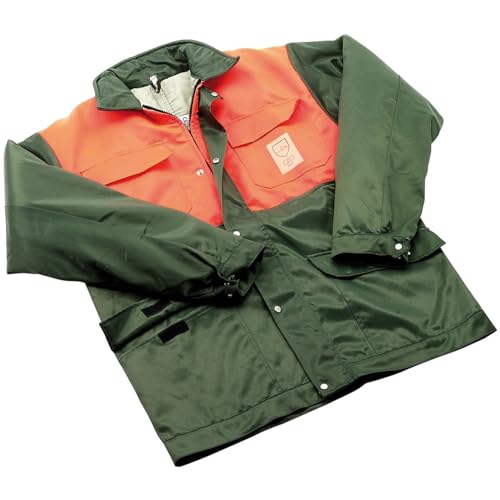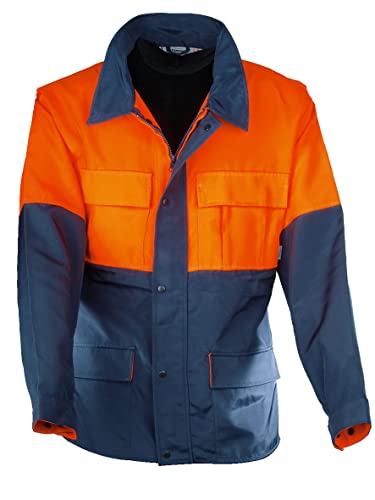Understanding the Importance of a Forestry Jacket: Key Features That Matter
Why a Forestry Jacket is Essential
A forestry jacket is more than just outerwear; it serves as a crucial barrier between you and the elements. If you’re spending time working or exploring in forested areas, you’ll want a jacket that can withstand wind, rain, and even the occasional brush with branches. These jackets are designed to provide protection while allowing for freedom of movement. By investing in a good forestry jacket, you are prioritising your safety and comfort during your outdoor adventures.
Key Features to Look For
When choosing a forestry jacket, it’s essential to look for features specifically designed for forest work. First, reflective strips increase visibility, especially crucial for safety during low-light conditions. Secondly, reinforced stitching and tough seams will contribute to the jacket’s durability. Lastly, features like adjustable cuffs and hoods allow for a custom fit, enhancing both protection and comfort.
Choosing the Right Fit: How to Select the Perfect Size and Style for Comfort and Mobility
Finding Your Size
To find the right size for a forestry jacket, start by measuring your chest, waist, and sleeve length. Always refer to the brand’s size chart, as sizes can vary between manufacturers. A well-fitted jacket should allow for a comfortable range of movement without being overly baggy. Consider trying on different sizes or styles to see which allows for layering underneath while still providing that snug fit.
Styles for Different Activities
Forestry jackets come in various styles tailored to different activities. For instance, if you’re primarily engaging in dynamic work, opt for a jacket with an athletic cut for enhanced mobility. If your work requires additional layering for colder conditions, look for a more relaxed fit that accommodates thicker jumpers or fleece. Remember, the ideal jacket style should keep you comfortable, whether you’re swinging an axe or navigating through underbrush.
Material Matters: The Best Fabrics for Durability and Weather Resistance
Choosing the Right Fabric
The choice of fabric is crucial in ensuring your jacket performs well over time. Look for materials like nylon or polyester blends, which are known for their water resistance and durability. These fabrics are both lightweight and strong, making them less likely to tear when snagged on branches or equipment. Additionally, consider options with a breathable lining to aid moisture management, which is particularly beneficial during strenuous activities.
Weather Resistance Features
A truly effective forestry jacket will often feature a water-repellent coating or a waterproof membrane. This ensures that you stay dry in rainy conditions. Also, check for ventilation zippers that allow moisture to escape, especially during warmer days. Knowing these feature will help keep you comfortable regardless of weather changes.
Practical Considerations: Pockets, Fastenings, and Other Features for Everyday Use
Functional Pocket Designs
Pockets are a vital component of any forestry jacket. Look for jackets that offer a variety of pocket styles—such as zippered pockets for secure storage, mesh pockets for quick access, and internal pockets for personal items like phones or wallets. Pockets should be easily accessible and ideally positioned so they don’t get in the way while you’re working.
Fastening Features
When it comes to fastening options, zippers are generally preferable for their security and ease of use. Some jackets may also offer snap buttons or velcro, which can be helpful in windy conditions. Consider jackets with adjustable fastenings for a more personalised fit, keeping you warm and secure.
Maintenance Tips: How to Care for Your Forestry Jacket to Ensure Longevity
Cleaning and Washing
To maintain the longevity of your forestry jacket, regular cleaning is essential. Always check the care label for specific washing instructions. Generally, it’s best to wash in cold water using a gentle detergent. Avoid fabric softeners, as they can compromise the jacket’s water-resistant properties. Hang dry your jacket rather than putting it in the dryer to preserve its shape.
Storage and Care
Proper storage is just as important as regular cleaning. Store your jacket in a cool, dry place, away from direct sunlight to avoid fading. If the jacket has a waterproof finish, reapplying a water-repellent spray after several washes can help maintain its effectiveness. Taking simple steps to care for your jacket will ensure it remains functional and visually appealing for many outdoor adventures to come.

















